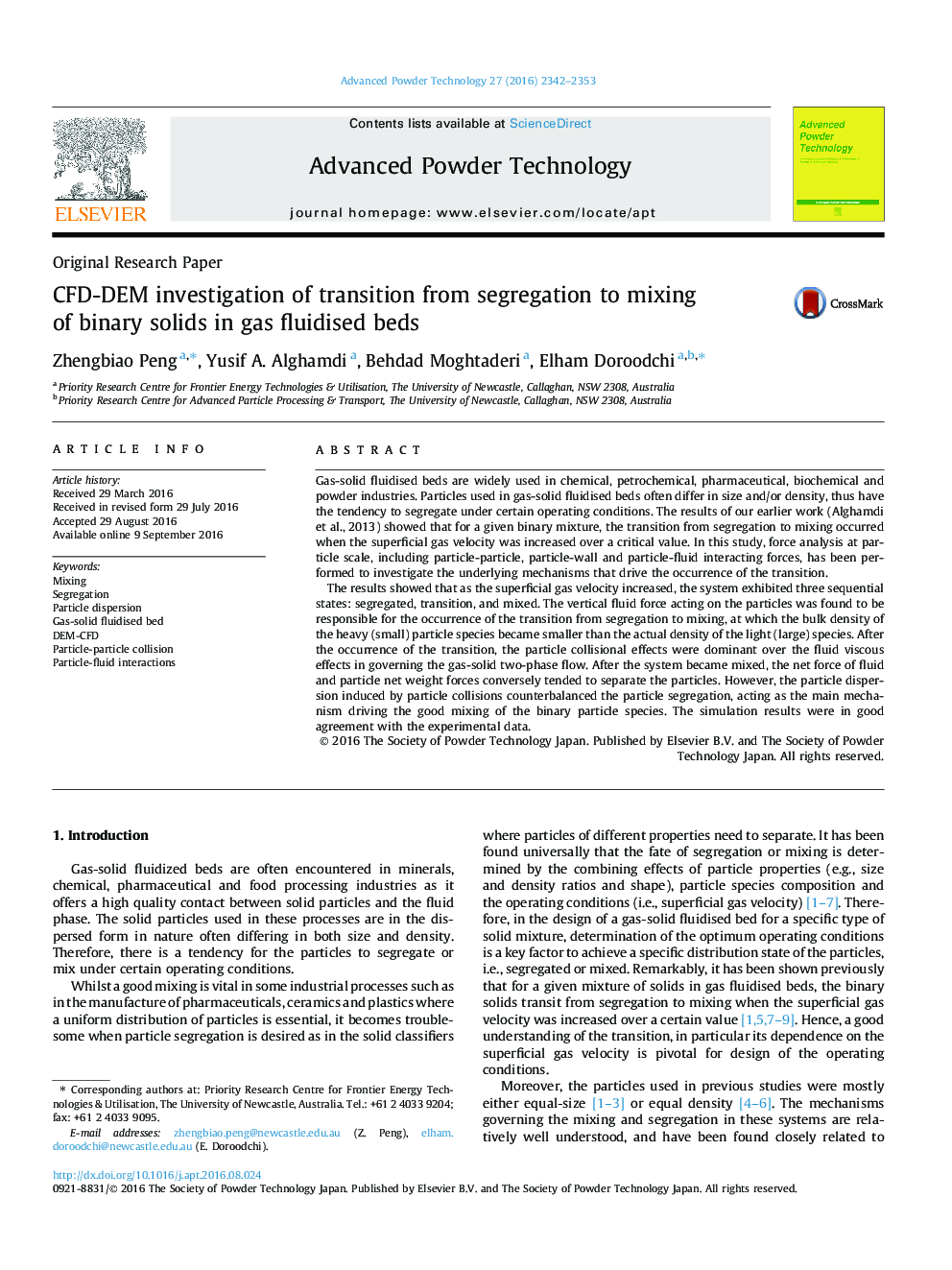| کد مقاله | کد نشریه | سال انتشار | مقاله انگلیسی | نسخه تمام متن |
|---|---|---|---|---|
| 6464797 | 438916 | 2016 | 12 صفحه PDF | دانلود رایگان |

- Fluid force is the main factor responsible for the occurrence of the transition.
- Bed exhibits sequential states: segregated, transition and mixed as Usf increases.
- Collision forces acting on individual particles have been quantified and analysed.
- Fate of mixing or segregation is related to the forces acting on the particles.
- Particle dispersion acts as the main mechanism driving the good mixing of particles.
Gas-solid fluidised beds are widely used in chemical, petrochemical, pharmaceutical, biochemical and powder industries. Particles used in gas-solid fluidised beds often differ in size and/or density, thus have the tendency to segregate under certain operating conditions. The results of our earlier work (Alghamdi et al., 2013) showed that for a given binary mixture, the transition from segregation to mixing occurred when the superficial gas velocity was increased over a critical value. In this study, force analysis at particle scale, including particle-particle, particle-wall and particle-fluid interacting forces, has been performed to investigate the underlying mechanisms that drive the occurrence of the transition.The results showed that as the superficial gas velocity increased, the system exhibited three sequential states: segregated, transition, and mixed. The vertical fluid force acting on the particles was found to be responsible for the occurrence of the transition from segregation to mixing, at which the bulk density of the heavy (small) particle species became smaller than the actual density of the light (large) species. After the occurrence of the transition, the particle collisional effects were dominant over the fluid viscous effects in governing the gas-solid two-phase flow. After the system became mixed, the net force of fluid and particle net weight forces conversely tended to separate the particles. However, the particle dispersion induced by particle collisions counterbalanced the particle segregation, acting as the main mechanism driving the good mixing of the binary particle species. The simulation results were in good agreement with the experimental data.
358
Journal: Advanced Powder Technology - Volume 27, Issue 6, November 2016, Pages 2342-2353